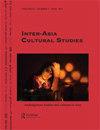Editorial: archiving Asian cities amidst time in motion
IF 0.3
4区 社会学
Q4 ANTHROPOLOGY
引用次数: 0
Abstract
The city, as a mediated, spontaneous, and evolving entity, relives and replicates itself through its own structures and codes. This is so because the city continuously regenerates multiple forms of embodied acts and gestures—which, as they reconstitute themselves, transmit and record collective memories, knowledge, trauma, and stories. As an amalgamation of numerous gestures, the city becomes a mesmerizing theater that resides on the cusp of fiction and reality. Its disparate constituents of the city—architectures, edifices, streets, alleys, people and their stories—have power to “turn the city into an immense memory where many poetics proliferate” (de Certeau, Giard, and Mayol 1998, 170). Archiving Asian cities amidst time in motion is a special issue project that explores modalities of remembering and recording the highly developed urban locales of the so-called Asian Tigers: Seoul, Singapore, Hong Kong, Taipei, Hsinchu, and Yuanlin. These places still hover around the remnants of colonization, Cold War structures, and varied aftermaths of rapid industrialization. Between the 1960s and 1990s, the economies of South Korea, Singapore, Hong Kong, and Taiwan have experienced rapid industrial development and by the early 2000s, these countries have developed into high-income economies. Rather than looking at these locations primarily through the lens of monetary growth, as leading international financial centers or model sites of technological innovation, this project aims to explore happenings on the other side of the city surface, possibly hidden or distorted beneath the glory of accelerated economic transition. In ways varying yet similar, the urban centers of these hyper-developed Asian Tigers have not only undergone massive alterations; they have evolved through constant deconstructions followed by reconstructions. The early period of urbanization of South Korea during the 1960s and1970s, for example, can be characterized as a series of vicious destructions of anything old. Only recently has the process of urban development in Seoul began to reclaim or excavate the value of traditional culture. Nonetheless, the current drive to “rehabilitate national heritage” may merely foment the formation of State-driven nationalist projects. It may even simply promote gentrification or commercialized tourist venues instead of encouraging the truly spontaneous, organic revival of civic communities. Viewed from this perspective, urban developments in these Asian cities over the past few decades have once again altered them, on a scale comparable to that of colonial occupation and even war. As most of the residents in these locales dwell simultaneously in various temporal states and unresolved moments in history, one of the aims of this project is to allow one to see how these urban spaces reactivate the past and produce the new “real” in our present. By and large, contributors to this special issue agree that “our perception of the past is determined by the present [; that is,] the manner in which the past is perceived is not solely dependent upon the available information about the past, but is also influenced by the interpretation of that information by the contemporary individual or society” (Stone 2020, 33). Articles covering six Asian cities consider births, metamorphoses, ramifications, and fluctuating social meanings of the given urban sites that not only recall the past but also recognize its continuous re-employment. This project reveals how the “city as archive” embodies memories of the given city itself, as well as history conveyed via architecture, city squares, island/landscapes, literature, heritage sites, and alleys. Our works share “a conception社论:在时间的流逝中归档亚洲城市
城市作为一个中介的、自发的、不断发展的实体,通过自己的结构和代码来重新体验和复制自己。这是因为这座城市不断再生多种形式的具体化行为和姿态——当它们重建自己时,传递和记录集体记忆、知识、创伤和故事。作为众多姿态的融合,这座城市成为了一座迷人的剧院,坐落在小说和现实的尖端。城市的不同组成部分——建筑、大厦、街道、小巷、人们和他们的故事——有力量“将城市变成一个巨大的记忆,许多诗学在这里激增”(de Certeau,Giard,and Mayol 1998170)。将亚洲城市在运动中存档是一个特刊项目,旨在探索记忆和记录所谓亚洲之虎高度发达的城市地点的方式:首尔、新加坡、香港、台北、新竹和元林。这些地方仍然徘徊在殖民残余、冷战结构和快速工业化的各种后遗症周围。20世纪60年代至90年代,韩国、新加坡、香港和台湾的经济经历了快速的工业发展,到21世纪初,这些国家已发展成为高收入经济体。该项目的目的不是主要从货币增长的角度来看待这些地方,将其视为领先的国际金融中心或技术创新的示范地,而是探索城市表面另一边发生的事情,这些事情可能隐藏或扭曲在经济加速转型的荣耀之下。在不同但相似的方面,这些高度发达的亚洲虎队的城市中心不仅发生了巨大的变化;它们是通过不断的解构和重建而发展起来的。例如,韩国在20世纪60年代和70年代的早期城市化可以被描述为对任何古老事物的一系列恶性破坏。直到最近,首尔的城市发展过程才开始回收或挖掘传统文化的价值。尽管如此,目前“恢复民族遗产”的努力可能只会助长国家驱动的民族主义项目的形成。它甚至可能只是促进士绅化或商业化的旅游场所,而不是鼓励公民社区真正自发、有机的复兴。从这个角度来看,这些亚洲城市在过去几十年中的城市发展再次改变了它们,其规模堪比殖民占领甚至战争。由于这些地区的大多数居民同时生活在各种时间状态和历史上未解决的时刻,该项目的目的之一是让人们看到这些城市空间如何重新激活过去,并在我们的现在产生新的“真实”。总的来说,本期特刊的撰稿人一致认为,“我们对过去的感知是由现在决定的[;也就是说,]感知过去的方式不仅取决于关于过去的可用信息,还受到当代个人或社会对该信息的解释的影响”(Stone 2020,33)。涵盖六个亚洲城市的文章考虑了特定城市遗址的诞生、变形、分支和波动的社会意义,这些城市遗址不仅让人回忆起过去,而且承认其持续的再就业。该项目揭示了“作为档案的城市”如何体现特定城市本身的记忆,以及通过建筑、城市广场、岛屿/景观、文学、遗产地和小巷传达的历史。我们的作品共享“一个概念
本文章由计算机程序翻译,如有差异,请以英文原文为准。
求助全文
约1分钟内获得全文
求助全文
来源期刊

Inter-Asia Cultural Studies
Multiple-
CiteScore
0.90
自引率
20.00%
发文量
22
期刊介绍:
The cultural question is among the most important yet difficult subjects facing inter-Asia today. Throughout the 20th century, worldwide competition over capital, colonial history, and the Cold War has jeopardized interactions among cultures. Globalization of technology, regionalization of economy and the end of the Cold War have opened up a unique opportunity for cultural exchanges to take place. In response to global cultural changes, cultural studies has emerged internationally as an energetic field of scholarship. Inter-Asia Cultural Studies gives a long overdue voice, throughout the global intellectual community, to those concerned with inter-Asia processes.
 求助内容:
求助内容: 应助结果提醒方式:
应助结果提醒方式:


